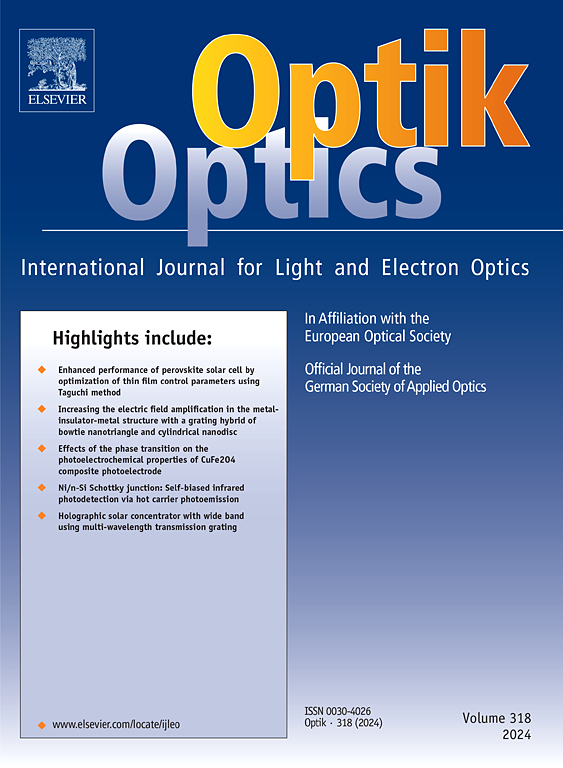Ultra-high-sensitive SPR device composed of CaF2 prism, Ag, graphene, and sensing medium for refractive index detection-artificial neural network training
IF 3.1
3区 物理与天体物理
Q2 Engineering
引用次数: 0
Abstract
The current work focuses on a refractive index (RI) biosensor using prism configuration used for various sensing applications. This design is suggested for evaluating the intensities of the reflectance for visible and near infrared wavelength range at fixed incident direction (=80 degree). Different materials used to realize our biosensor, the CaF2 prism, the silver (Ag), and the graphene. A numerical method based on the electromagnetic theory is employed to compute the reflectance property. Significant results concerning the sensitivity and reflection depth are showed after optimizing some geometrical parameters. The parameters used to examine the biosensor’s performance are the RI sensitivity (SRI), figure of merit (FoM), and quality factor (QF). The higher values of SRI, FoM, and QF provided by our suggested structure are 54600 nm/RIU, 151 /RIU‐1, and 6.29 respectively, when the RI is ranging from 1.33 to 1.39. In this research, for input parameters of our sensor, we predict the sensitivity’s data by using the artificial neural network technique. It is remarked that the latest approach shows a significant results compared to that obtained by the theoretical method. In the context of temperature sensing, our device showed an average temperature sensitivity of 6.99 nm/K, and a maximum, sensitivity of 17.68 nm/K.
求助全文
约1分钟内获得全文
求助全文
来源期刊

Optik
物理-光学
CiteScore
6.90
自引率
12.90%
发文量
1471
审稿时长
46 days
期刊介绍:
Optik publishes articles on all subjects related to light and electron optics and offers a survey on the state of research and technical development within the following fields:
Optics:
-Optics design, geometrical and beam optics, wave optics-
Optical and micro-optical components, diffractive optics, devices and systems-
Photoelectric and optoelectronic devices-
Optical properties of materials, nonlinear optics, wave propagation and transmission in homogeneous and inhomogeneous materials-
Information optics, image formation and processing, holographic techniques, microscopes and spectrometer techniques, and image analysis-
Optical testing and measuring techniques-
Optical communication and computing-
Physiological optics-
As well as other related topics.
 求助内容:
求助内容: 应助结果提醒方式:
应助结果提醒方式:


